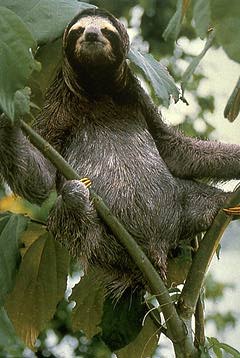Album 4
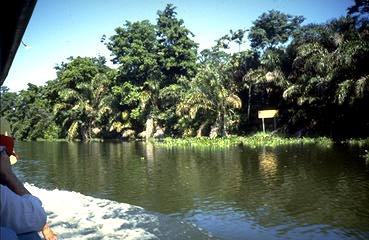
Mangroves in coastal canal at Limon, Costa Rica |
One of the reasons we visited Limon was the opportunity to travel by boat up the inland canal that parallels the Caribbean sea northward all the way to Nicaragua. We contracted a boat and the trip, starting from the Port of Moin near Limon, was an unforgettable experience. The boat was a reliable but rather primitive affair and was owned by two brothers (Danny and Willis Rankin) who made most of their living by picking up coconuts and any other agricultural produce produced by the few families that lived on the canal and selling it in Limon. The trip took four hours to go up the channel and four hours to return. Shortly after leaving Limon the boat went through an area of mangrove swamps and then turned into the main narrow channel. The trip takes one through a tropical jungle. We enjoyed the dense tropical vegetation along the banks of the canal where there are few signs of human habitation. Huge trees and a variety of tropical vegetation line the shores of the canal. |
|
Sloth seen on trip |

Howler monkeys gave us a serenade, spider monkeys were jumping through the trees, and we saw iguanas, sloths, bats, green lizards, blue morpho butterflies, turtles, and a great variety of birds included toucans, egrets, parrots, and a variety of other tropical birds. A howler monkey concert is an unforgettable audio experience. No alligators were spotted, but they are frequently seen. It is to be hoped that the magnificent tropical rain forests of Costa Rica can be saved for future generations to enjoy. |
 |

Students at Pacific beach in Playa Hermosa, Costa Rica with local animal life. |
| Dancing after midnight outside of Hotel Acon, Limon, Costa Rica. Moises Cardenas and Katy van Dusen are visible. The trip faculty went together for dinner to the Hotel Las Olas for old times sake and for its atmosphere. The entertainment the night of our dinner was a trio called the Grupo Cristal which included a Mexican, a Costa Rican, and a Jamaican. The Mexican sang wonderful Mexican songs and the Jamaican sang Caribbean music. Their music was great, so the faculty decided to invite all the students to dinner the following night and arranged with the trio to provide music. The affair was a great success. The students really enjoyed the music, danced for hours, and a fine time was had by all. When we left the hotel around midnight the musicians accompanied us on the bus and continued their music. I believe they really enjoyed the genuine enthusiasm and appreciation of their music by the students. When we got out of the bus they played several encores in the entryway to the Hotel Acon for the enjoyment of all. Incidently, the Hotel Acon was nearly destroyed in the earthquake of 1993. The Hotel Las Olas was destroyed. |
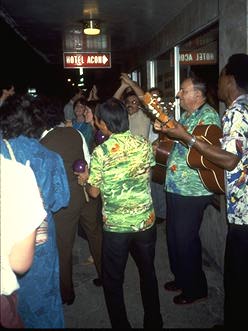
|
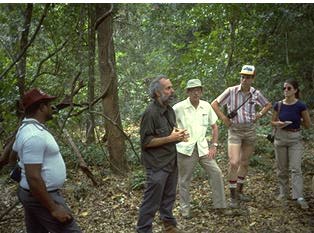
Dan Janzen lecturing class. On the right Tom Scott and our Teaching Assistant Katy Van Dusen. Professor Dan Janzen, working with his ecology students and Costa Rican colleagues, had spent years studying the flora and fauna of this dry tropical forest. Janzen is considered to be one of the outstanding tropical ecologists of the Americas. |
One of our more interesting visits was to the Parque Nacional Santa Rosa. Professor Janzen is a spectacular showman and an articulate spokesman for saving the biodiversity and ecological treasures of the tropics. He kindly showed us around the forest, beginning with a casual mention of the numerous poisonous snakes found in the park. Henceforth, I always made sure that students walked ahead of me as we traveled through the forest and the tall grass areas of the park. All were fascinated with his explanations of the complicated interactions of plants and animals in the forest. On one visit, Janzen could not meet us in the park, so instead he gave a slide lecture in our motel in the evening. At the conclusion of his inspiring talk he took up a collection from students and staff of more than $ 300.00, as he was collecting money to save the ÒhisÓ park. I recollect that in order to to save the snakes and jaguars of the park I was shamed into donating $ 20.00 . |

Thatched hut - Atlantic coast of Honduras. Field ready to burn for slash and burn agriculture. |
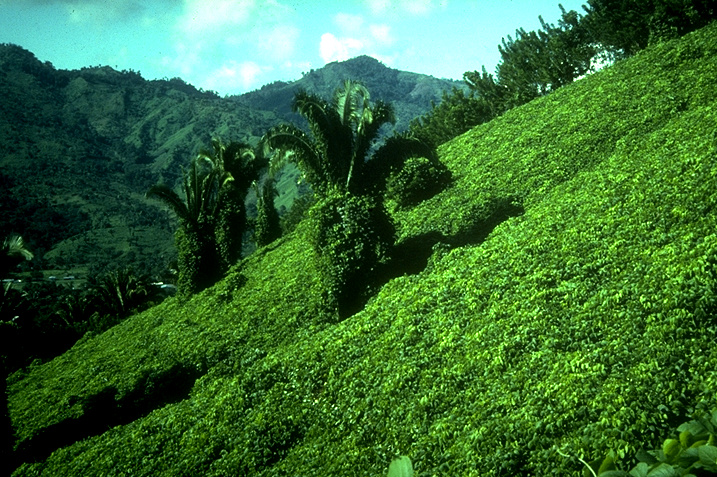
Steep hillside on the Atlantic coast of Honduras covered with mucuna (velvet bean) used by farmers as a slashed mulch in association with maize.(Photo courtesy of Bernard Triomph) |
